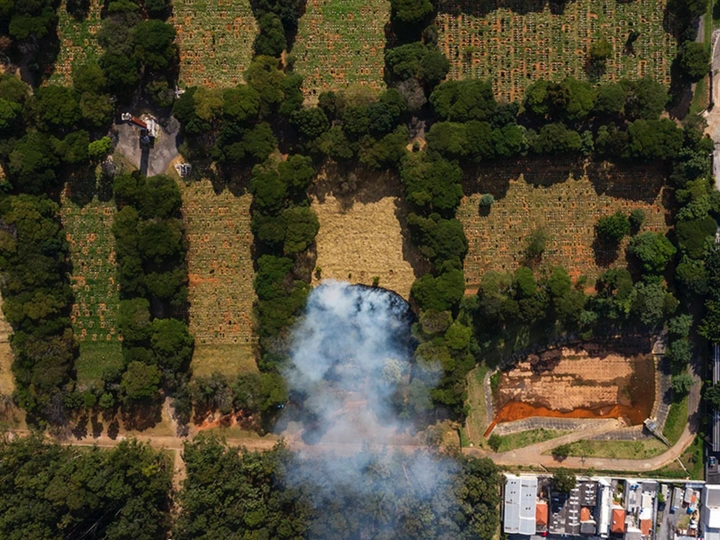What is not forest is ruination

Michelle Jean de Castro
My work focuses on equality, power, ecology and social change in the built environment, combining architecture and anthropology. In acknowledgment of Achille Mbembe's book “Necropolitics” and Ann Laura Stoler’s “Imperial Debris: Reflections on Ruins and Ruination” I have been mapping with drone the burial ground since covid-19 hit Brazil. Based on decolonizing architecture, the project seeks to explore the intersection of death, memory, and architecture in the context of colonialism and its aftermath. It proposes a shift away from the dominant paradigm of architecture as a tool for building monuments and glorifying the ruling elite, towards an architecture that recognizes and honors the lives and histories of marginalized communities that have been affected by colonialism, slavery, and genocide.
During the pandemic in Brazil, together with the architectural photographer Leonardo Finotti, I started to visit the Vila Formosa cemetery in the city of São Paulo every week. It is noteworthy that this is the largest public cemetery in Latin America and that 8,000 shallow graves were dug there to receive the city's covid-19 victims. The congestion of the dead quickly transformed the space of the necropolis and its relationship with the city. The records we made resulted in more than 600 images that allow us to visualize, at first, the disappearance of the vegetation that gives way to the recurrent burials, but as the months pass, these same spaces begin to be taken over by an undergrowth that grows little by little. When the images are worked together, what is seen is an urban area in constant movement but completely isolated from the city. These are not, therefore, photos that aestheticize the tragedy, seeking to technically compensate for the scourge of the pandemic by constructing sweeping visions of chaos. It is, on the contrary, about making the presence of death and the interruption of life speak in the midst of emptiness.
Necropolis as ruin, mobilizes three central research terms - necro or dead body, polis or city and ruin or presence of silence. Achille Mbembe, Cameroonian philosopher, presupposes in his essay Necropolitics (2003), “the maximum expression of sovereignty resides, to a large extent, in the power and capacity to dictate who can live and who must die” the data mentioned show the force of a policy of death, where the State does not recognize the poor and black population as composed of people, but of things. Their lives are given no protection, and their deaths are reduced to numbers in our society.